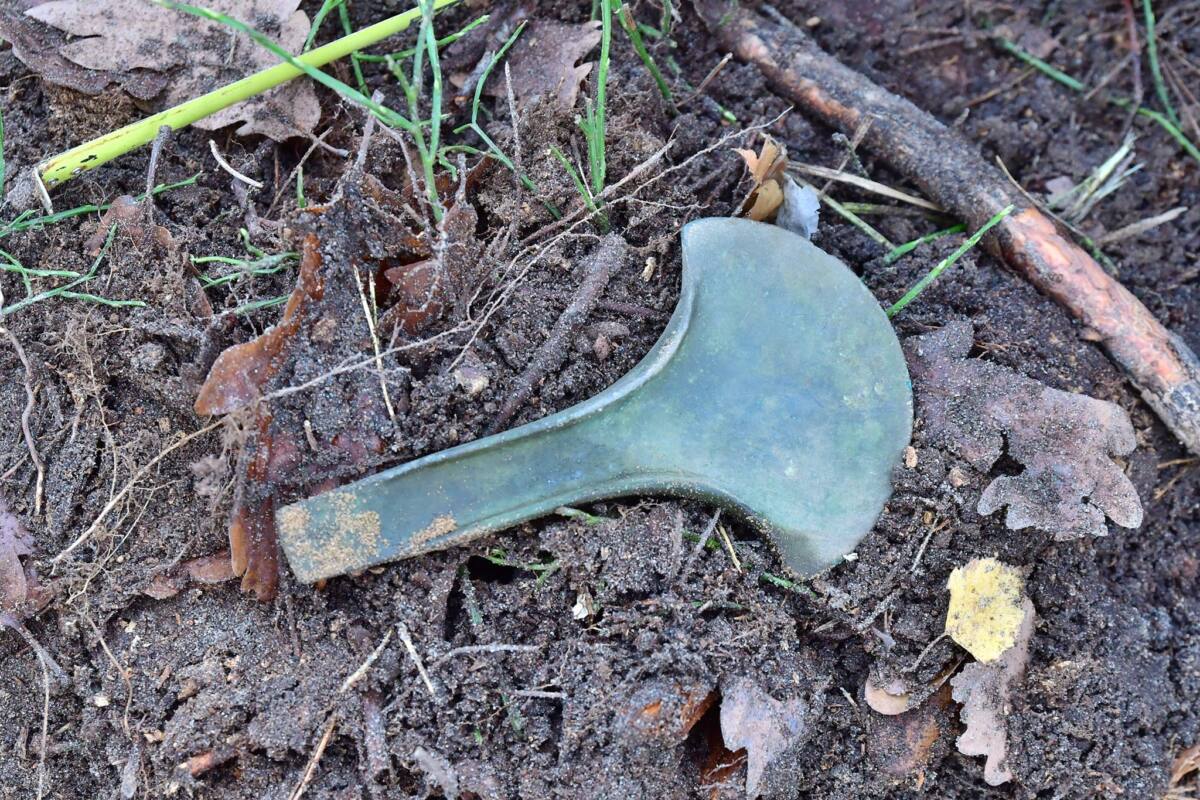3,500-year-old axes found in forest by man with a metal detector

During a recent trip to the Starogard Forest in Poland, Denis Konkol brought his metal detector to see what mysteries he unearth. As a history enthusiast, he hoped to discover something significant along the way. When his detector went off, Konkol made a once-in-a-lifetime find: a collection of ancient tools from the Bronze Age.
In a Nov. 27 Facebook post, the Starogard Forest District announced the “sensacyjne odkryrcie” (sensational discovery) of the items, which experts estimated to be about 3,500 years old.
MORE: Family uncovers hidden WWII bomb shelter under paving stone in their garden
“We were genuinely amazed at how great a condition they have been preserved,” officials shared in the social media post.
Their condition was remarkable, considering they were found buried in only between 8 and 12 inches of soil.
Konkol, who had filed for permits to explore the area, immediately contacted officials after his find. Archeologists arrived on the scene to study where the tools were discovered.
MORE: Man just starting to use a metal detector found 2 pounds of gold in a field
“The extraction of these finds took place under the archeological supervision of our colleagues from the Provincial Office for the Protection of Monuments,” said Igor Strzok, the Pomeranian Provincial Conservator of Monuments to Science in Poland. “This means that we have prevented possible destruction of this site.”
Strzok added that this is the first time in nearly 20 years that tools like these have been found.
According to the archeology team, five axes were found at the excavation site, dating back to between 1700 and 1300 BC. Also found near the site was a fibula, an object used in ancient times to fasten clothes or as an ornament given among the wealthy, according to the forest agency’s Facebook post.
As for what these tools were used for, the Head of the Department of Archeological Monuments, Piotr Klimaszewski, shared a couple of possible theories with Science in Poland.
“They could have had a cult character — they could have been a sacrifice,” he said. “However, it was probably a trade-related object.”
MORE: Man with metal detector makes the ‘find of the century’







